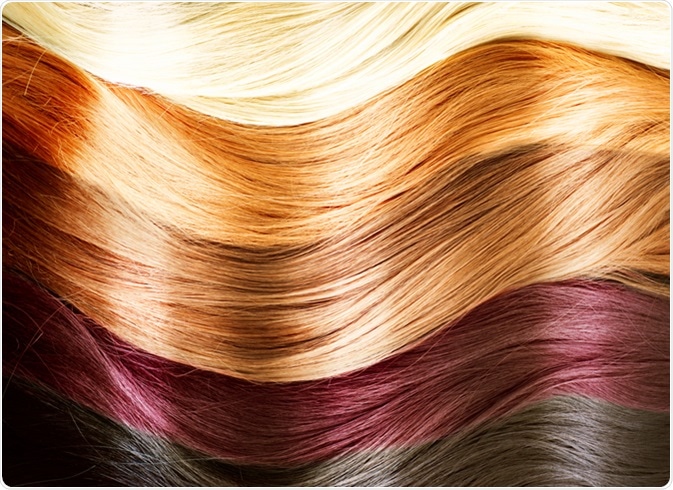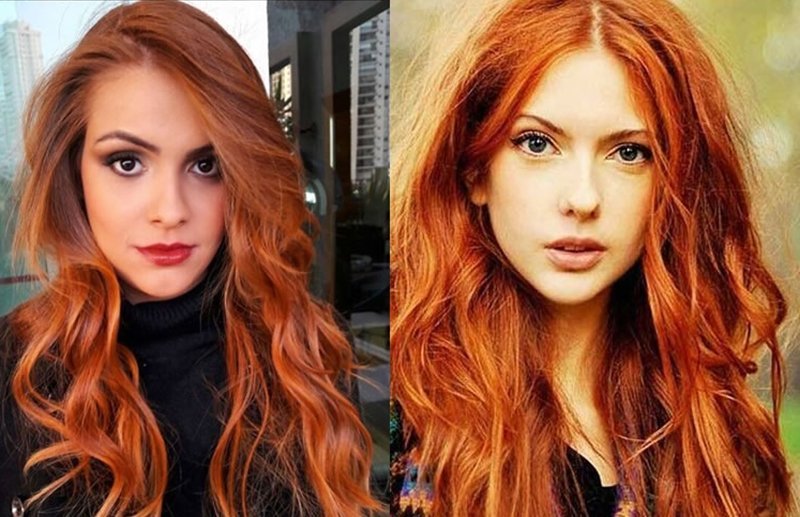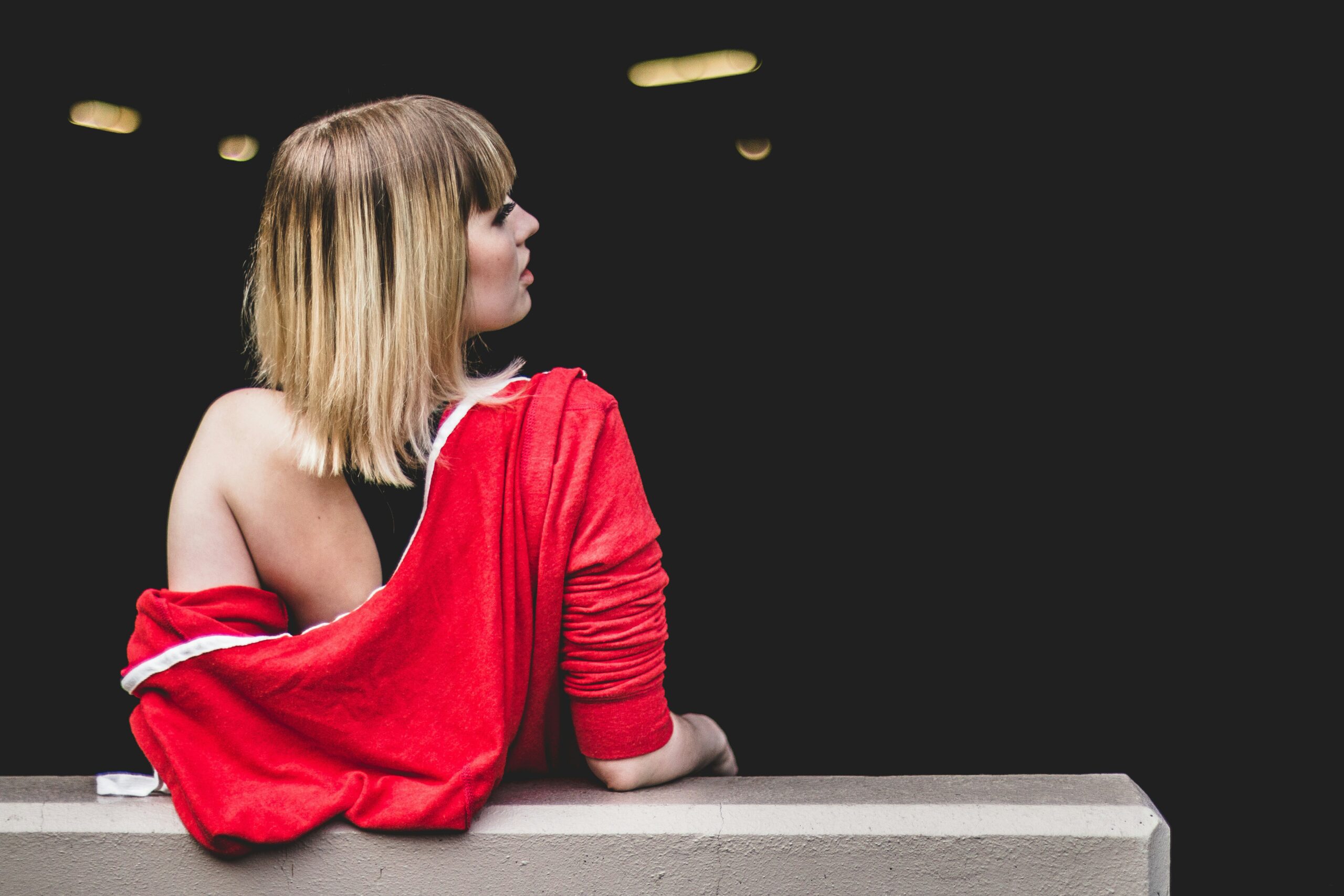Introduction:
Human hair color is a mesmerizing tapestry, reflecting diversity, cultural significance, and genetic wonders. From fiery reds to icy blondes, and everything in between, each hue tells a story of genetic inheritance, personal style, and societal norms. Let’s delve into this rich palette and unravel the mysteries of human hair color.

Red Hair Human:
Red hair, often referred to as the rarest of them all, embodies individuality and mystique. Its fiery hue is a result of a genetic mutation in the MC1R gene, which affects melanin production. Human hair color Despite being relatively uncommon, redheads captivate with their unique charm and often stand out in a crowd. Historically, red hair has been associated with magic, passion, and even misfortune in various cultures, adding to its allure and enigma.
Blonde Skunk and Brown Skunk Stripe:
The terms “blonde skunk” and “brown skunk stripe” may sound peculiar, but they refer to the natural variation in hair color that mimics the markings of these elusive creatures. A “blonde skunk” describes hair with prominent streaks or highlights of blonde amidst a darker base, while a “brown skunk stripe” denotes a similar pattern with brown hues. These variations add depth and dimension to hair, creating a striking visual effect reminiscent of nature’s artistry.
Colored Frontal and Blonde Frontal Hair:
In the realm of hair fashion, colored frontal, and blonde frontal hair are statements of boldness and creativity. A colored frontal refers to a hairpiece or wig featuring vibrant hues such as neon, pastel, or even unconventional colors like blue or purple. Human hair color These daring choices allow individuals to express their personality and experiment with their appearance.
Similarly, blonde frontal hair exudes a sense of elegance and sophistication. Blonde shades range from platinum to honey, offering versatility and a timeless allure. Whether flaunting a platinum blonde bob or cascading waves of golden locks, blonde frontal hair exudes confidence and charm.
Honey Brown Skunk Stripe and Red Wave Hair:
The interplay of honey-brown skunk stripes and red wave hair showcases the intricacies of nature’s palette. A honey-brown skunk stripe, characterized by warm, caramel-toned highlights against a darker base, adds warmth and richness to any hairstyle. Human hair color Paired with soft waves or sleek straight strands, it creates a harmonious balance of light and shadow.
Red wave hair, on the other hand, embodies the vibrant energy of crimson tides. Whether in loose curls or structured waves, the rich red hues command attention and evoke a sense of dynamism. Red wave hair symbolizes passion, strength, and a zest for life, making it a captivating choice for those who dare to stand out.
Cultural Significance and Symbolism:
Beyond genetics and personal style, human hair color holds deep cultural significance and symbolism across different societies. In ancient civilizations, such as Egypt and Greece, hair color was associated with deities and supernatural beings. For example, the Egyptian goddess Hathor was often depicted with golden locks symbolizing divine power and fertility. Similarly, in Norse mythology, red hair was linked to Thor, the god of thunder, representing strength and protection. Human hair color These cultural associations have left an indelible mark on how we perceive and value different hair colors, shaping societal norms and ideals of beauty.
The Evolution of Hair Dyeing Techniques:
Throughout history, humans have employed various techniques to alter their hair color, ranging from natural dyes derived from plants and minerals to modern synthetic pigments. Ancient civilizations used plant extracts like henna to achieve vibrant red hues or indigo for deep blues. In contrast, the development of synthetic dyes in the 19th century revolutionized the hair care industry, offering a wider range of colors and longer-lasting results. Today, advancements in hair dyeing techniques, such as balayage and ombre, allow for seamless blending and customization, catering to diverse preferences and trends.
Psychological Impact of Hair Color:
Studies have shown that hair color can influence perceptions and even behavior, both in the wearer and those around them. Blonde hair, for instance, is often associated with youthfulness and approachability, while darker hues like brown or black may convey authority and sophistication. Human hair color Redheads, meanwhile, are sometimes stereotyped as fiery and passionate, adding depth to the psychological impact of hair color. Additionally, individuals may experience changes in self-esteem and confidence after dyeing their hair, reflecting the profound psychological connection we have with our appearance.
Hair Color Trends and Fashion:
Hair color trends evolve with each passing season, reflecting changing tastes, influences from pop culture, and advancements in hair care technology. From the bold neon hues of the 1980s to the subtle balayage techniques popular today, hair color trends offer endless possibilities for self-expression and reinvention. Social media platforms like Instagram and TikTok play a significant role in shaping these trends, with influencers and celebrities showcasing their latest hair transformations to millions of followers worldwide. As a result, hair color has become not just a personal choice but a form of artistic expression and cultural currency.
The Future of Human Hair Color:
As we look to the future, the world of human hair color continues to evolve, driven by innovation, sustainability, and inclusivity. Sustainable hair dyeing methods, using natural and eco-friendly ingredients, are gaining popularity as consumers become more environmentally conscious. Human hair color Moreover, advancements in genetic research may unlock new insights into the genetic basis of hair color, offering personalized solutions and treatments for hair-related conditions. Ultimately, human hair color will remain a dynamic and multifaceted aspect of our identity, reflecting the rich tapestry of human diversity and creativity.

The Emotional Connection to Hair Color:
Beyond the physical attributes, hair color often fosters emotional connections and memories. Many people associate specific hair colors with significant life events or stages of personal growth. For example, dyeing one’s hair a bold color may symbolize a desire for change or a newfound sense of confidence. Similarly, maintaining a natural hair color can evoke feelings of nostalgia and comfort, reminding individuals of cherished memories and experiences associated with their upbringing or cultural heritage. In this way, hair color becomes more than just a superficial attribute; it becomes a deeply ingrained part of one’s identity and emotional landscape.
Hair Color as a Form of Self-Expression
Hair color serves as a canvas for self-expression, allowing individuals to convey their personality, mood, and style preferences. Whether opting for a subtle highlight or a dramatic transformation, changing hair color can be a liberating act of self-discovery and reinvention. For some, experimenting with different hues and techniques is a form of artistic expression, akin to painting or sculpting. Human hair color Through hair color, individuals can project their innermost thoughts and feelings onto the external world, forging a deeper connection with themselves and those around them.
The Intersection of Beauty Standards and Hair Color:
Beauty standards, influenced by culture, media, and societal norms, often dictate which hair colors are deemed desirable or attractive. In Western societies, blonde hair has long been idealized as a symbol of youthfulness and femininity, while darker hair colors may carry associations with maturity or exoticism. These perceptions can impact individuals’ self-esteem and confidence, especially if their natural hair color deviates from the societal ideal. However, the beauty industry is gradually embracing diversity and inclusivity, celebrating a wide range of hair colors and textures as beautiful and worthy of admiration.
Hair Color and Social Identity:
Hair color can also intersect with social identity, influencing how individuals are perceived and treated by others. Studies have shown that people may make snap judgments based on hair color, attributing certain traits or stereotypes to individuals based on their appearance. These preconceptions can shape social interactions and interpersonal relationships, highlighting the complex interplay between physical appearance and social identity. Moreover, cultural factors may further influence perceptions of hair color, leading to varying attitudes and stereotypes across different regions and ethnicities.

The Future of Hair Color Innovation:
As technology advances and consumer preferences evolve, the future of hair color innovation holds exciting possibilities. From sustainable dyeing methods to personalized color formulations, beauty companies are continuously striving to meet the diverse needs and desires of consumers. Furthermore, advancements in genetic research may unlock new insights into the genetic basis of hair color, paving the way for revolutionary treatments and interventions. As we embrace the ever-changing landscape of human hair color, one thing remains certain: the beauty of diversity will continue to shine bright, illuminating the world with its kaleidoscope of colors and textures.
Conclusion:
Human hair color is a testament to the beauty of diversity and individuality. From the fiery allure of red hair to the timeless elegance of blonde, and the natural variations in between, each hue carries its significance and charm. Whether embracing natural tones or experimenting with bold colors, human hair color allows us to express ourselves and celebrate the kaleidoscope of possibilities that adorn our heads. So, let’s embrace the spectrum and revel in the wonders of human hair color.
Read More: CAR CRASHES WHITE HOUSE: 4 POWERFUL SECURITY MEASURES
FAQs:
How does genetics influence hair color?
Genetics plays a significant role in determining hair color, with genes regulating the production and distribution of melanin, the pigment responsible for hair coloration.
Can hair color change naturally over time?
Yes, hair color can change naturally due to factors such as aging, hormonal fluctuations, and exposure to sunlight, leading to gradual shifts in pigmentation.
What factors contribute to hair dye fading?
Hair dye can fade due to frequent washing, exposure to UV light, harsh styling products, and the use of hot tools, compromising color longevity over time.
Are there risks associated with frequent hair dyeing?
Frequent hair dyeing can lead to potential damage, including dryness, breakage, and scalp irritation, necessitating proper hair care routines and occasional breaks between treatments.
How can I maintain a vibrant hair color?
To maintain vibrant hair color, use color-safe shampoos and conditioners, minimize heat styling, protect hair from UV exposure, and schedule regular touch-ups with a professional colorist.

